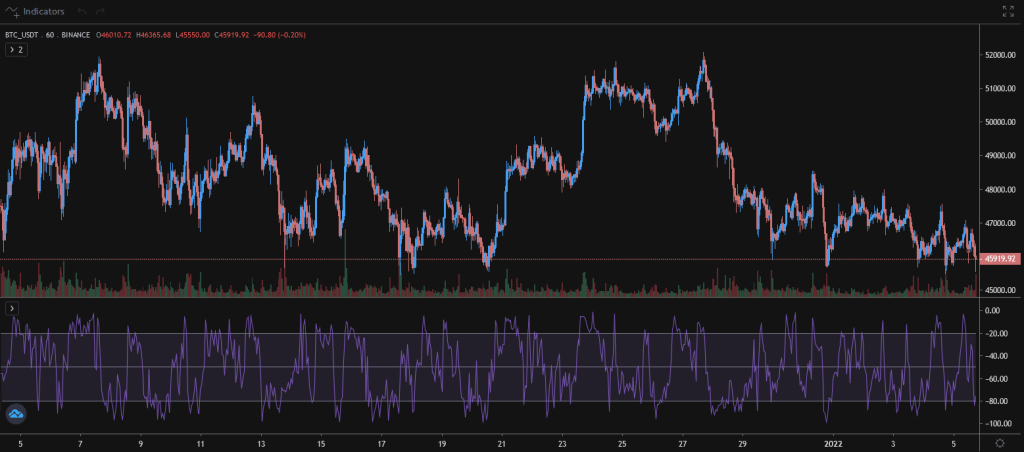Disclaimer: The opinions expressed here are for general informational purposes only and are not intended to provide specific advice or recommendations for any specific security or investment product. You should never invest money that you cannot afford to lose. Before trading using complex financial products, please ensure to understand the risks involved. Past performance is no guarantee of future results.
An algorithm is defined by a specific set of instructions used to buy and sell in the markets. If you’ve spent any time doing this manually, you’ll be familiar with a range of influences. The relentless tug of war on deciding whether to sell can wreak havoc on your attention, as you go about your life. The promise of automation is that you get to worry less about each trade.
Instant reaction time, 24/7 awareness, and reduced risk of input errors make automation a clear choice for anyone with a predetermined plan.
Enter the syndication marketplace
We’ve explained the Tuned platform already so I won’t go into detail here. But suffice to say, we offer functionality and a wealth of information that inspires the confidence to build and automate. By attracting top talent, we can offer a collection of high quality trading strategies.
On the syndication marketplace, a strategy creator may sell the trading signals produced by their algorithm. This can be anything from one to many strategies bundled as a syndication. For a fee structure determined by the creator, a subscriber will receive trading signals as they’re produced in real time. Our vision is to create an alternative ecosystem to traditional money managers, but with easier access.
After a quick look at our marketplace, you will come across impressive results. These are real, and we don’t inflate our numbers with extra leverage. However, it’s also important to note that not every trade is perfect. Just because the performance line goes up and to the right doesn’t imply a steady journey.
While it’s true that automation reduces the need for human intervention, it’s impossible to remove entirely. It’s still your money after all. Just the small act of monitoring your account balance can influence a decision to withdraw or stay in a syndication. This is why picking the right syndication doesn’t just boil down to whichever one has the highest profit. As an investor, you must also predict how you’d react during downturns. Trusting a stranger’s algorithm is always easy when things are going well.
At the time of writing this, Bitcoin is worth around $56k. How many people are there today that would be willing to buy at $20k? Probably everyone besides Warren Buffet. Back in 2017 this wasn’t such an obvious choice.
We provide a number of metrics in our marketplace to help investors anticipate risk, but I’d also like to substantiate that with some advice here.
A strategy for selecting strategies?
1. Compare live performance with backtest results
The biggest fear of algorithmic trading is that a creator has modelled their strategy around a limited sample of market data. Optimizing for past idiosyncrasies instead of adaptability in the marketplace can lead to disappointing live results. We call this overfitting.
I said before not to focus on pure profit/loss. In this case the goal is to find out whether a syndication is living up to expectations.
2. What is the maximum drawdown (MDD)?
This statistic represents the largest loss from a peak to a low point, before a new peak is achieved. Using Bitcoin again as an example, its drop from $20k to $3.2k constitutes an MDD of -84%. We know this worked out in the end, but not everyone will stomach such a loss. Since a big selling point of automated trading is less worrying, you ideally want to pick something that isn’t risky. Generally, an MDD greater than -20% is considered risky.
3. Is there leverage?
This metric acts as a position size multiplier. A leverage of 3x implies your position profits and losses will be magnified 300%. So with greater upside comes increased risk. 1x leverage is closest to normal trading, but with the ability to open short positions. It’s common for traders to leverage themselves in pursuit of higher profits, but as I’ll discuss shortly that isn’t always necessary.
Beating the market without leverage
As an investor, there are two distinct ways to grow your wealth on Tuned. Getting more USDT is the most traditional method. Buy low, and sell high to end up with more money. Most strategies on Tuned optimize for this. However, there is a second type of syndication, Bybit and Binance Coin Future strategies. These focus on growing your coin collection, and can have vastly different results from a USDT optimized strategy.
Take for example any crypto bull run. 10% more USDT is nice but probably disappointing, especially if Ethereum has grown 20% in the same time. On the other hand, with a coin collection syndication, 10% more Ethereum is great because the asset itself has already performed so well. In this case, anything above 0% is ‘beating the market’. However, under these circumstances, your wealth is also tied to downtrends. In the event that Etherum crashed 50%, growing your collection, say 5%, isn’t going to help much. Whether you want to run a combination of both methods is up to you.
The value of algorithmic trading is clear, but not necessarily a simple decision. It largely depends on how you will react in various situations of profit and loss, regardless of automation. I can’t pretend to answer this for you, but I hope you’ll use this article as a point of reference when browsing our syndication marketplace.








